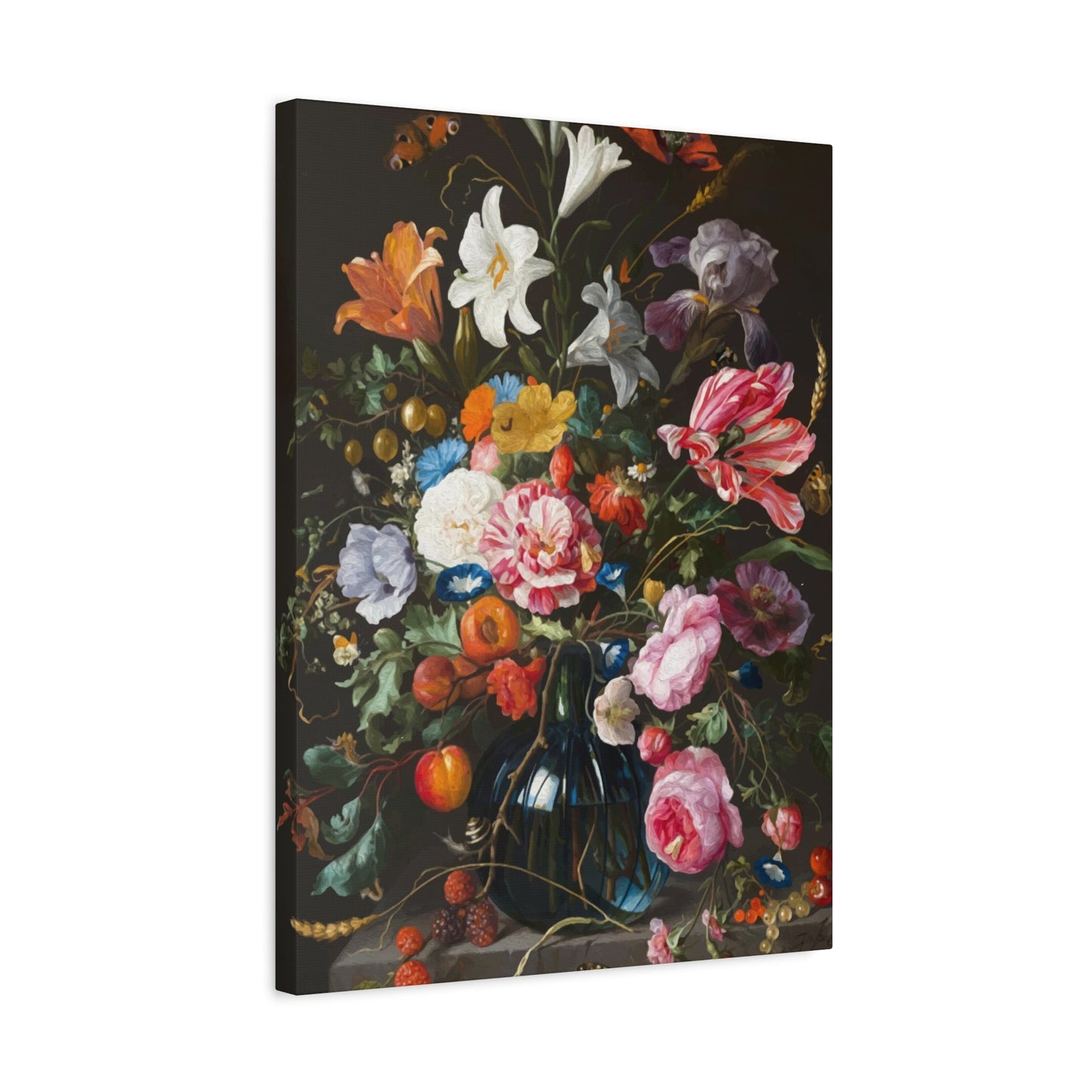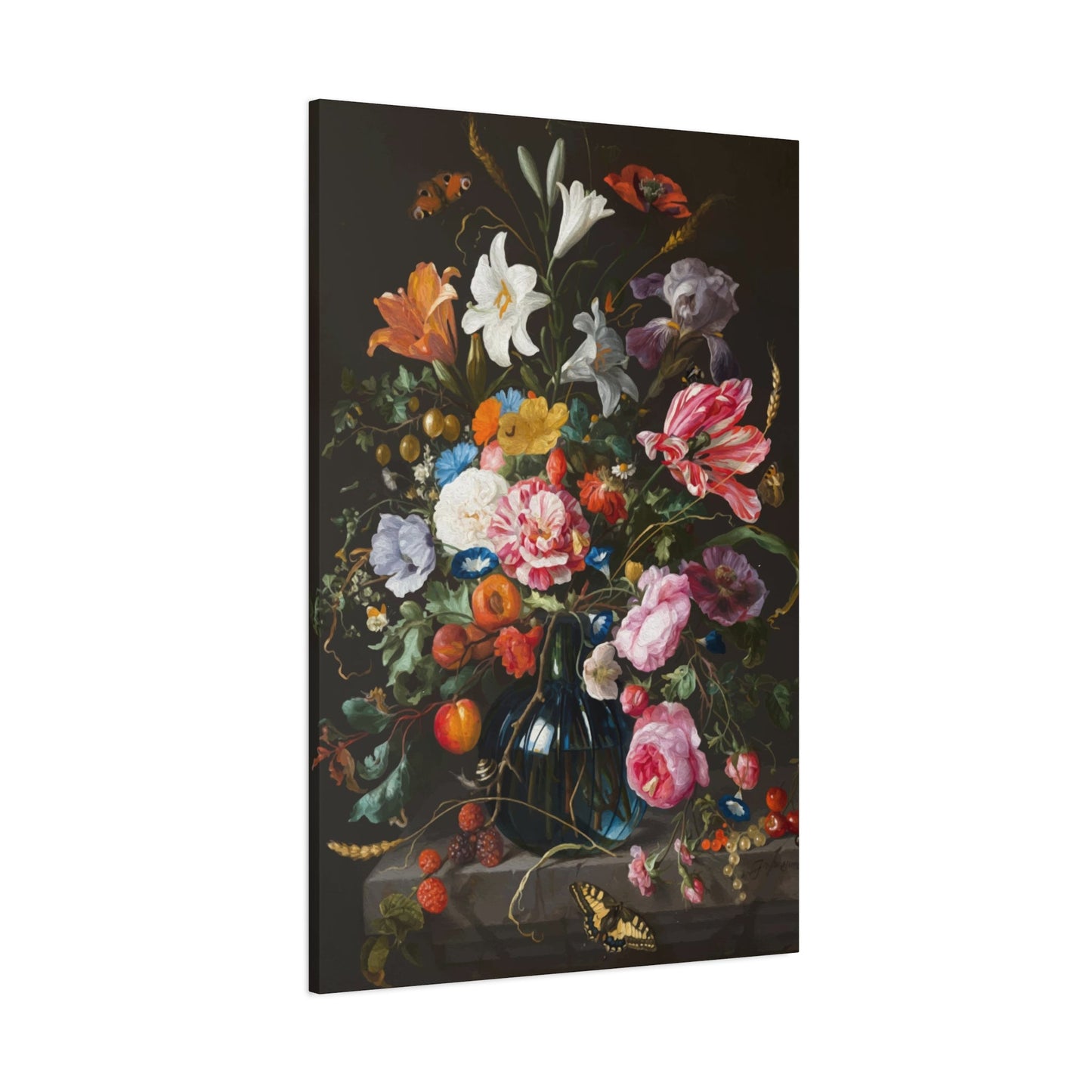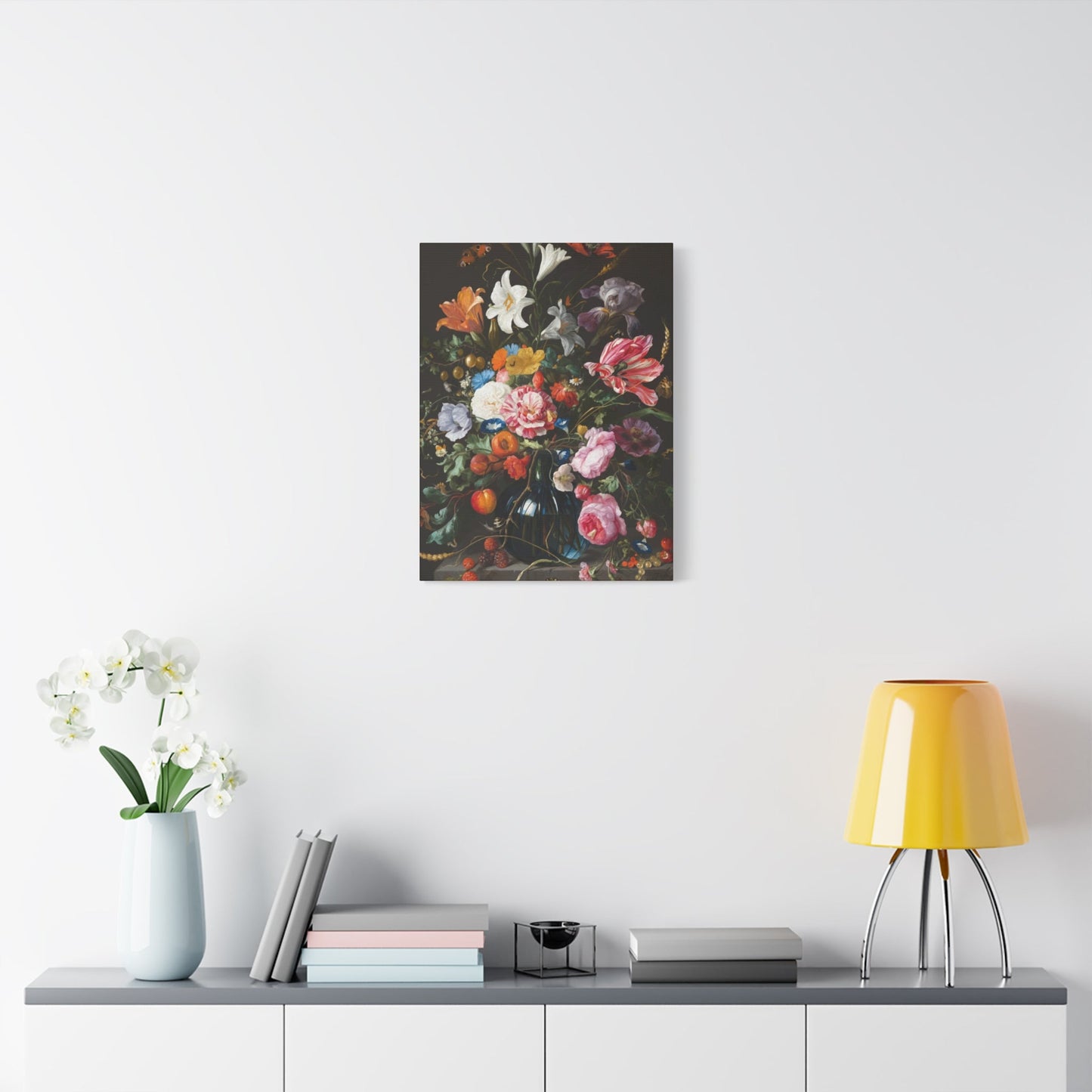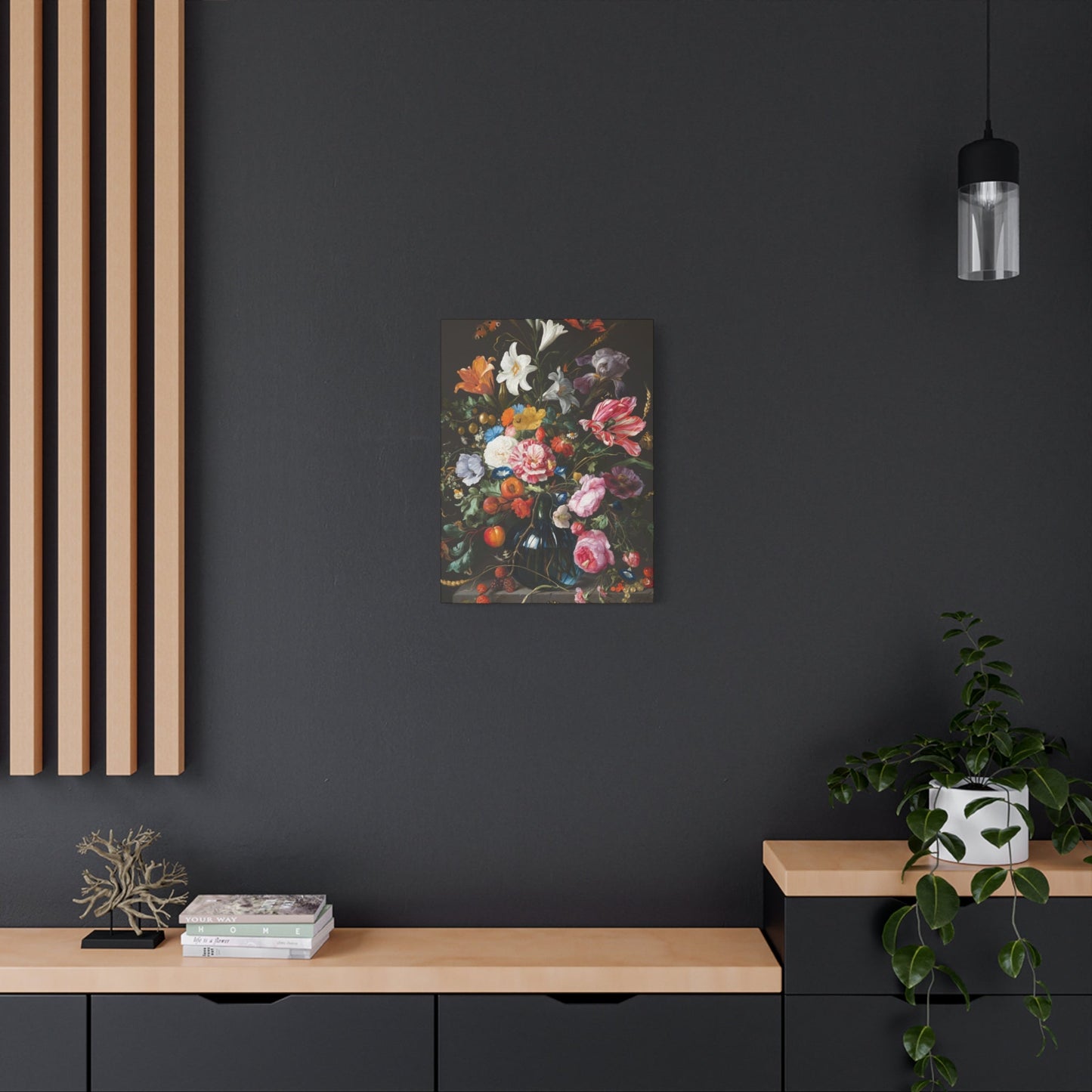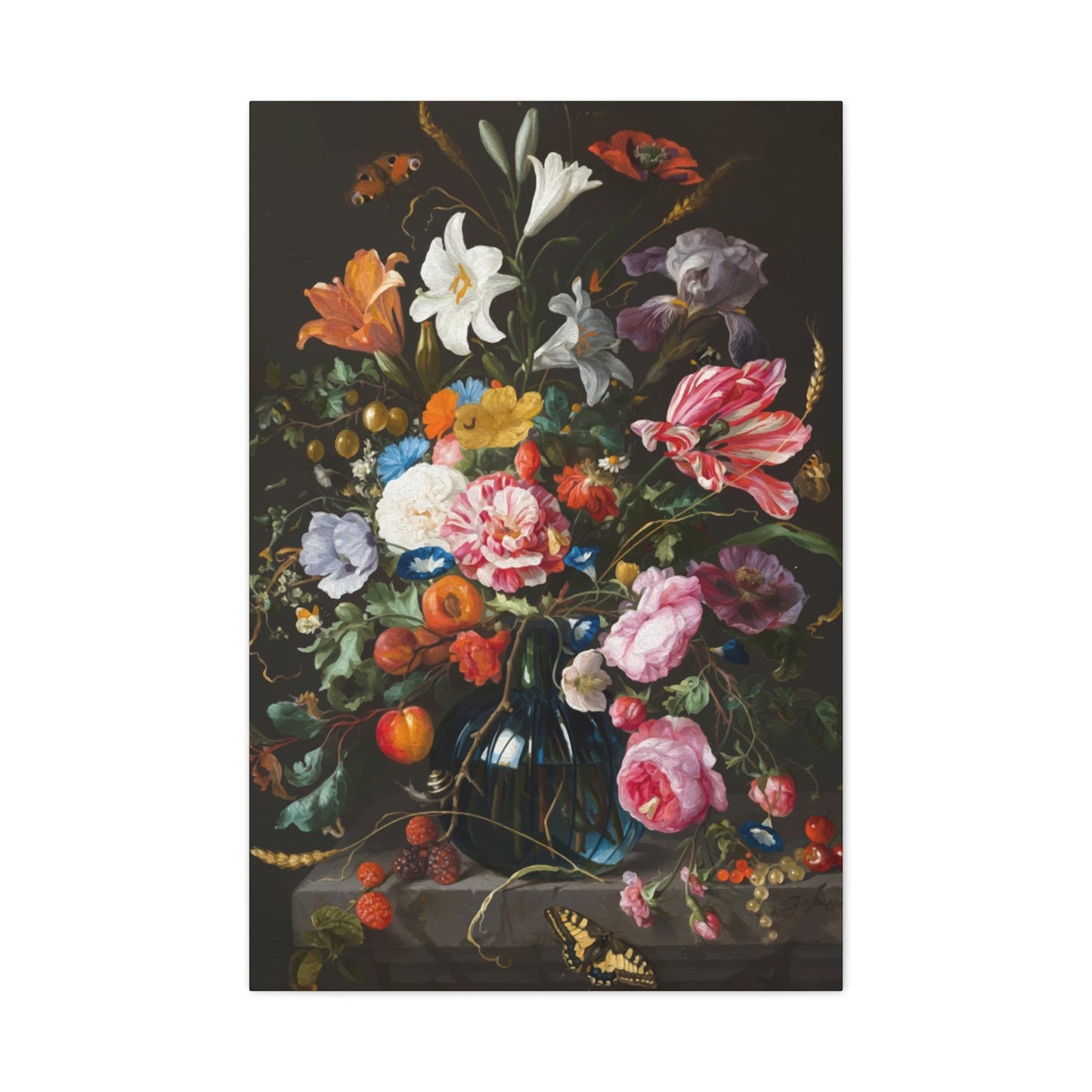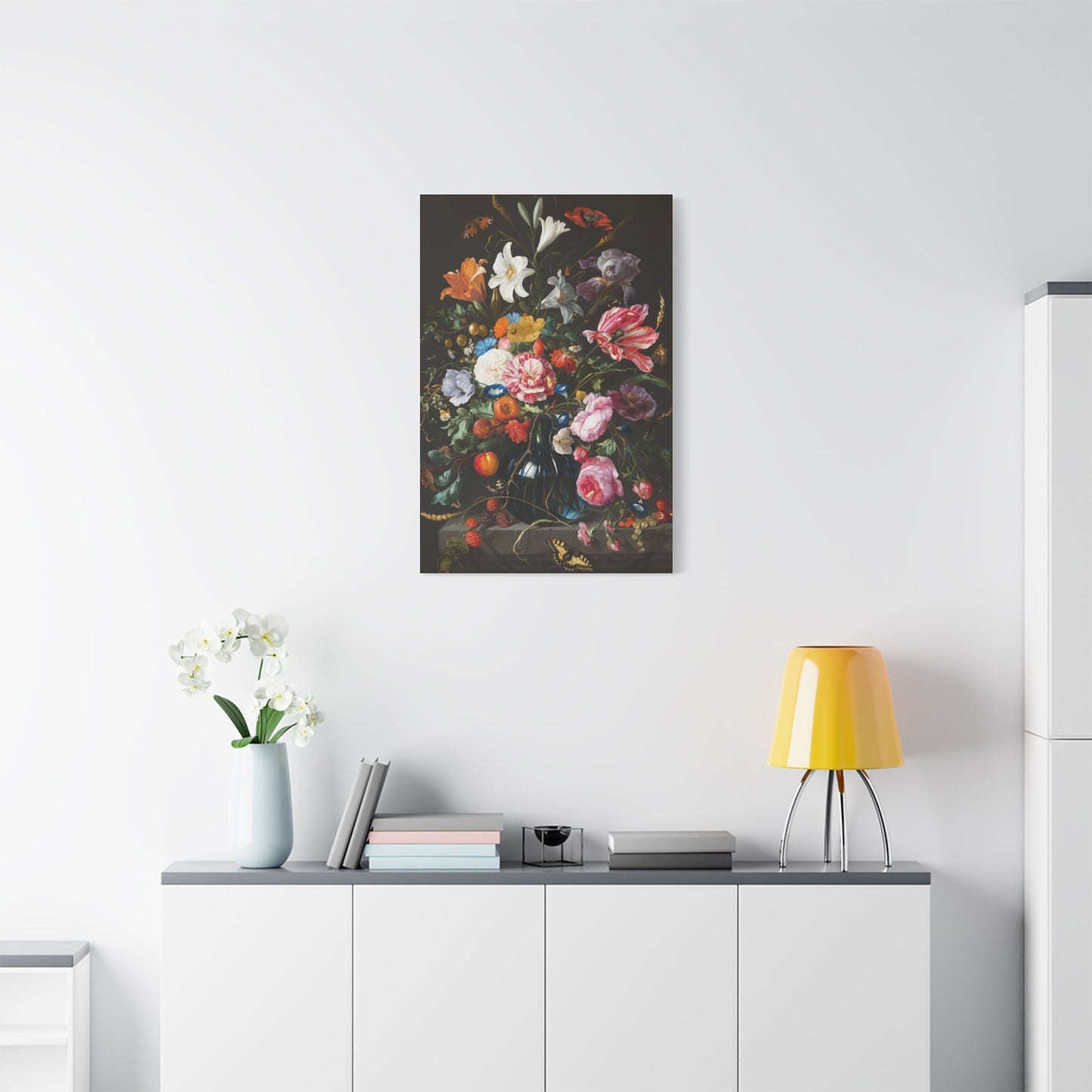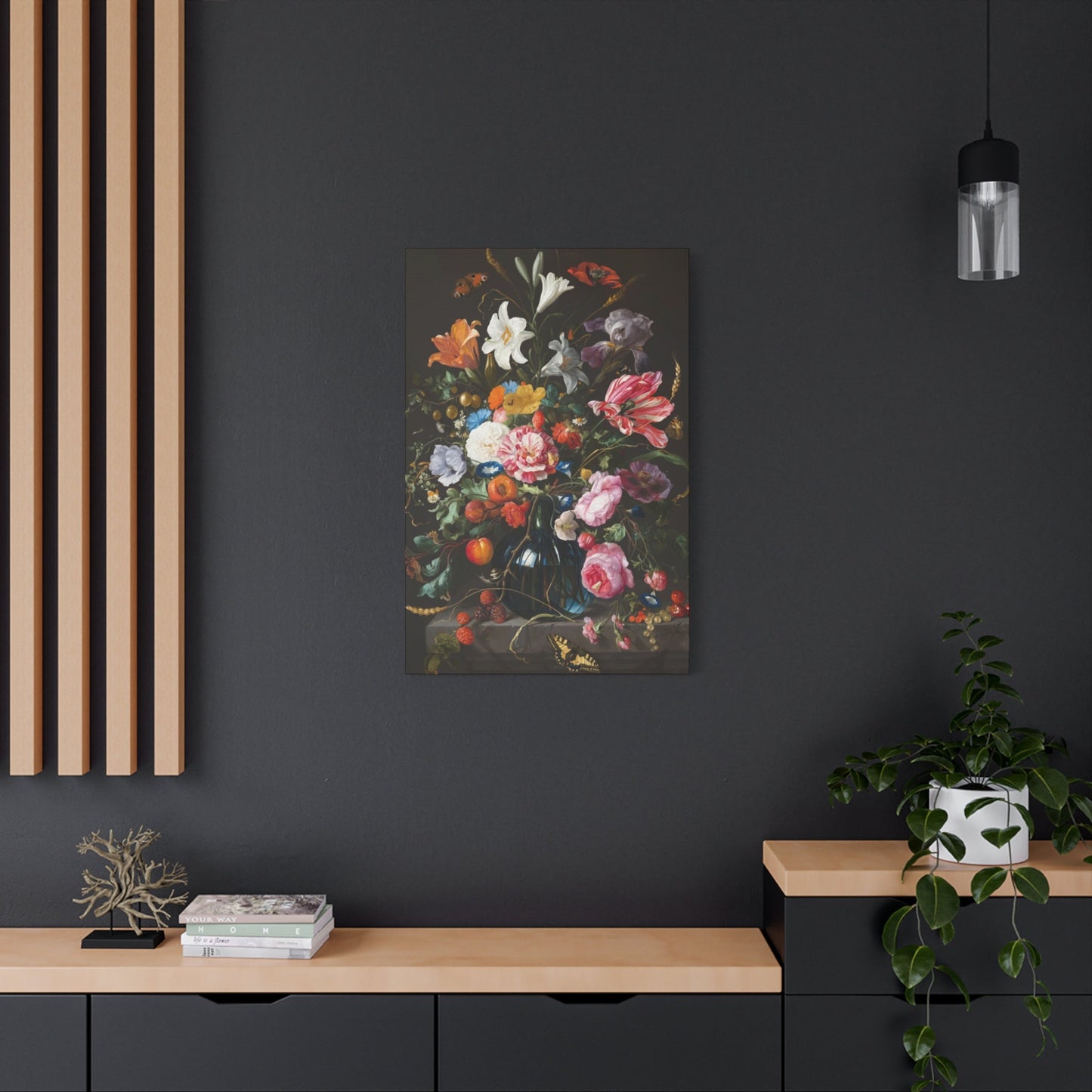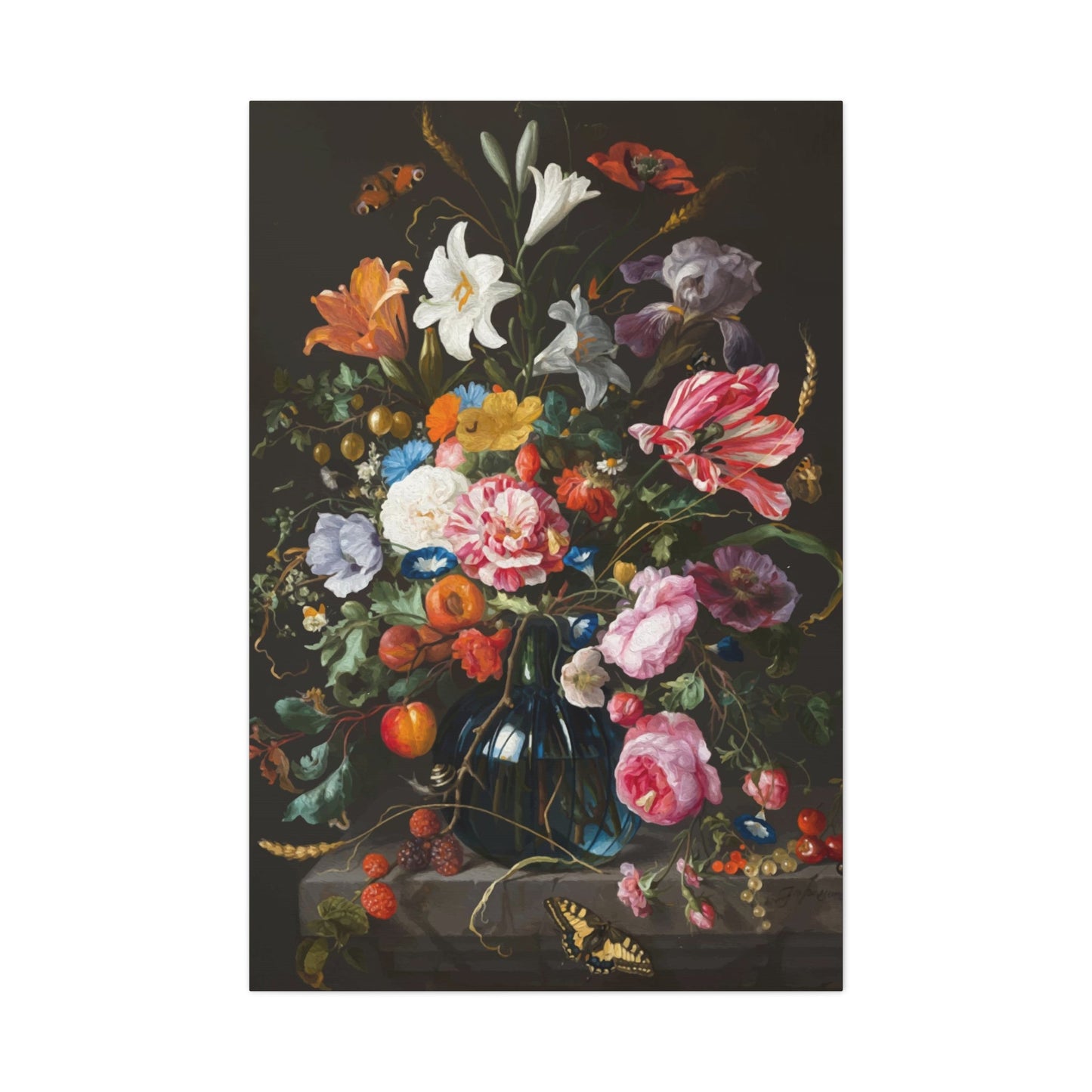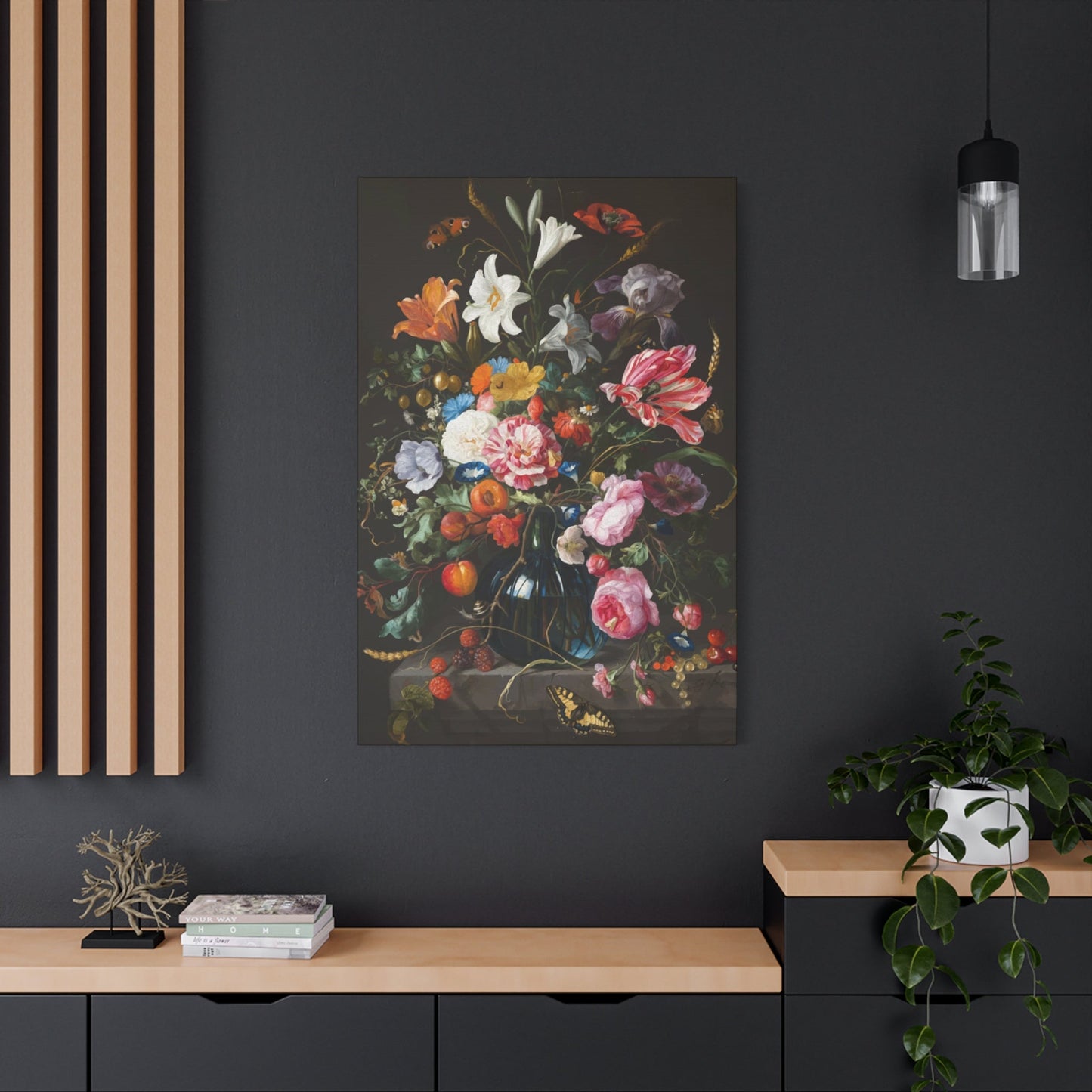Vase Wall Art: Elevating Interior Aesthetics with Canvas Prints and Botanical Designs
Interior design has witnessed a remarkable evolution in recent years, with homeowners and decorators increasingly seeking artwork that combines natural elements with artistic expression. Among the most captivating trends emerging in contemporary home decor is the incorporation of vase-themed wall art, which seamlessly blends botanical beauty with artistic sophistication. These decorative pieces offer a versatile solution for transforming living spaces, bringing elements of nature indoors while maintaining a refined aesthetic appeal.
The popularity of vase wall art stems from its unique ability to serve as both a focal point and a complementary element within various interior design schemes. Whether displayed in living rooms, bedrooms, offices, or dining areas, these artistic representations of vessels adorned with flowers, branches, or abstract designs provide visual interest without overwhelming existing decor. The timeless nature of vase imagery ensures that such artwork remains relevant across changing design trends, making it a worthwhile investment for those seeking lasting beauty in their home environments.
From minimalist line drawings to richly detailed botanical illustrations, vase wall art encompasses a broad spectrum of artistic styles and interpretations. Contemporary designers and artists continue to explore innovative approaches to this classic subject matter, resulting in pieces that range from photorealistic representations to abstract interpretations. This diversity ensures that individuals with varying aesthetic preferences can find vase-themed artwork that resonates with their personal style while enhancing the overall ambiance of their living spaces.
Artistic Vase Prints with Botanical Flair
The intersection of botanical illustration and vase design has created a captivating category within decorative wall art that appeals to nature enthusiasts and design aficionados alike. Artistic vase prints featuring botanical elements represent more than mere decoration; they embody a celebration of the natural world and humanity's enduring fascination with flora. These pieces typically showcase vessels filled with carefully rendered plants, flowers, leaves, and stems, each element contributing to a harmonious composition that captures the viewer's attention.
Botanical vase prints draw inspiration from historical traditions of plant illustration, dating back centuries when botanical artists meticulously documented plant species for scientific and aesthetic purposes. Contemporary interpretations of this genre maintain the precision and attention to detail characteristic of classical botanical art while incorporating modern design sensibilities. Artists working in this style often combine watercolor techniques with fine line work, creating pieces that feel both delicate and visually substantial.
The color palettes employed in botanical vase prints typically reflect the natural hues found in plant life, ranging from deep forest greens and rich burgundies to soft sage tones and muted earth colors. These organic color schemes make botanical vase prints particularly adaptable to various interior design styles, from rustic farmhouse aesthetics to contemporary urban spaces. The presence of natural colors helps create a sense of tranquility within a room, promoting relaxation and connection to the outdoor environment.
When selecting botanical vase prints for interior spaces, consideration should be given to the specific plant species depicted and their symbolic meanings. For instance, eucalyptus branches suggest cleansing and renewal, while olive branches convey peace and wisdom. Lavender sprigs evoke feelings of calm and serenity, whereas protea flowers represent courage and transformation. Understanding these botanical associations allows homeowners to select artwork that resonates on both aesthetic and emotional levels.
The scale and proportion of botanical vase prints significantly impact their effectiveness within a space. Large-scale prints featuring oversized vases with abundant floral arrangements make bold statements suitable for spacious walls in living rooms or entryways. Conversely, smaller botanical prints work beautifully when arranged in gallery wall configurations, allowing for creative combinations that tell visual stories through varied plant specimens and vessel shapes. Medium-sized prints offer versatility, functioning well as standalone pieces or as components within larger decorative arrangements.
Framing choices profoundly influence the final presentation of botanical vase prints. Natural wood frames complement the organic subject matter, creating cohesive visual narratives that emphasize the connection between artwork and nature. White or cream-colored frames provide clean, contemporary presentations that allow the botanical details to command attention. Black frames offer sophisticated contrast, particularly effective with prints featuring lighter backgrounds or pale-toned florals. The matting selection also plays a crucial role, with wider mats creating breathing room around the artwork and narrower mats producing more immediate visual impact.
The technique used to create botanical vase prints affects their character and appeal. Traditional watercolor paintings scanned and reproduced as prints maintain the fluid, translucent quality characteristic of the medium, with visible brushstrokes and color variations adding authenticity. Digital illustrations offer crisp precision and vibrant color consistency, ideal for contemporary interiors seeking polished, professional aesthetics. Mixed media approaches combining photography with painted elements produce intriguing hybrid works that bridge realistic and artistic interpretations.
Placement strategies for botanical vase prints should consider lighting conditions within the space. These pieces generally benefit from natural light, which enhances the subtle color variations and details within the botanical elements. However, direct sunlight should be avoided to prevent fading over time. Artificial lighting can be strategically employed to highlight botanical vase prints during evening hours, with picture lights or track lighting creating focal points that draw attention to the artwork's intricate details.
Seasonal rotation of botanical vase prints offers an engaging way to refresh interior spaces throughout the year. Spring-themed prints featuring tulips, daffodils, and cherry blossoms celebrate renewal and growth. Summer pieces showcasing peonies, sunflowers, and wildflowers capture the season's abundant energy. Autumn prints with dahlias, chrysanthemums, and dried grasses reflect the transitional nature of fall. Winter artwork featuring evergreen branches, berries, and paperwhites maintains botanical interest during colder months. This rotational approach keeps interior spaces feeling current and connected to the natural cycles occurring outdoors.
Soft and Serene: Vase Canvas Art Ideas
Creating peaceful, calming environments within living spaces has become increasingly important as individuals seek refuge from hectic daily routines. Soft and serene vase canvas art serves this purpose admirably, offering visual tranquility through gentle color palettes, simplified compositions, and soothing subject matter. These pieces eschew dramatic contrasts and bold statements in favor of subtle beauty that promotes relaxation and mental clarity.
The defining characteristics of serene vase canvas art include muted color schemes dominated by pastels, neutrals, and desaturated tones. Soft pinks, gentle lavenders, pale blues, and creamy whites frequently appear in these compositions, creating atmospheric effects reminiscent of early morning light or twilight hours. These subdued colors have psychological effects that reduce stress and anxiety, making them particularly suitable for bedrooms, meditation spaces, and areas designated for relaxation.
Compositional simplicity distinguishes serene vase art from more complex botanical illustrations. Rather than featuring abundant floral arrangements bursting with varied species, these pieces typically showcase single stems or small groupings of flowers in understated vessels. This minimalist approach allows viewers to focus on individual elements without visual overwhelm, creating contemplative viewing experiences that encourage mindfulness and present-moment awareness.
The textural qualities of canvas as a medium enhance the serene nature of vase artwork. Unlike glossy paper prints, canvas surfaces absorb and diffuse light, creating softer visual presentations that feel more organic and approachable. Gallery-wrapped canvases eliminate the need for frames, producing clean, contemporary presentations that maintain the artwork's peaceful character without additional visual elements competing for attention. The three-dimensional quality of stretched canvas adds subtle depth to wall presentations without creating dramatic shadows or bold architectural statements.
Artists creating serene vase canvas art often employ techniques that enhance the peaceful qualities of their work. Soft-focus effects blur edges and details, creating dreamlike atmospheres that feel gentle and non-threatening. Watercolor washes produce translucent layers of color that build depth gradually, maintaining lightness throughout the composition. Negative space plays a crucial role, with generous areas of unadorned background allowing the eye to rest and preventing visual congestion.
The selection of vessels depicted in serene vase canvas art tends toward simple, elegant forms rather than ornate or decorative containers. Ceramic vases with smooth surfaces and gentle curves, glass vessels with transparent or translucent qualities, and minimalist geometric containers all contribute to the overall sense of simplicity and calm. The vessels themselves become secondary to the overall atmospheric quality of the piece, serving as quiet supporters of the featured botanical elements rather than demanding individual attention.
Serene vase canvas art pairs exceptionally well with various interior design styles that prioritize tranquility and simplicity. Scandinavian-inspired spaces benefit from the light, airy quality of these pieces, which complement the clean lines and neutral palettes characteristic of Nordic design. Japanese-influenced interiors find harmony with serene vase art through shared appreciation for simplicity, natural elements, and contemplative aesthetics. Coastal and beach-themed rooms welcome the soft, washed colors reminiscent of sea and sky that often appear in serene vase compositions.
Layering serene vase canvas art with other decorative elements requires careful consideration to maintain the peaceful atmosphere. Complementary textiles in similar color families enhance the cohesive feel without introducing jarring contrasts. Natural materials such as linen, cotton, and jute echo the organic qualities present in the artwork. Furniture selections in light woods, white-washed finishes, or pale upholstery allow the serene vase art to remain a focal point while contributing to the overall sense of tranquility.
The psychological benefits of incorporating serene vase canvas art into living spaces extend beyond mere aesthetic pleasure. Research in environmental psychology demonstrates that exposure to calming visual stimuli reduces cortisol levels, lowers blood pressure, and promotes feelings of wellbeing. The presence of botanical imagery, even in artistic representation, triggers positive associations with nature and outdoor environments. For urban dwellers or those with limited access to natural settings, serene vase canvas art provides valuable connection to botanical beauty.
Creating gallery walls featuring multiple serene vase canvas pieces allows for artistic variation while maintaining overall atmospheric consistency. Groupings might include different flower types presented in similar color palettes, various vase shapes rendered in consistent styles, or seasonal progressions showing the same vessel with different botanical contents. Asymmetrical arrangements feel organic and relaxed, while symmetrical layouts contribute to the sense of order and calm. Consistent spacing between pieces creates visual rhythm without introducing distracting irregularities.
Vase Wall Art to Brighten Your Space
Lighting plays a fundamental role in how we experience interior environments, affecting mood, productivity, and overall comfort. Vase wall art designed to brighten spaces leverages color theory, compositional techniques, and subject matter to introduce luminosity and positive energy into rooms. These pieces function as visual light sources, reflecting actual illumination while creating perceptions of enhanced brightness through strategic design choices.
Color selection forms the foundation of brightening vase wall art. Warm yellows, vibrant oranges, sunny golds, and crisp whites dominate these compositions, immediately drawing the eye and creating focal points that energize surrounding areas. These hues possess inherent luminosity, appearing to generate light rather than merely reflecting it. When sunlight or artificial lighting interacts with these colors, the effect multiplies, creating dynamic visual experiences that change throughout the day as lighting conditions shift.
Floral choices within brightening vase wall art typically feature species known for their cheerful, uplifting qualities. Sunflowers, with their large golden blooms and associations with happiness, make frequent appearances. Daffodils and tulips in yellow and orange varieties contribute spring-like freshness year-round. Marigolds, zinnias, and gerbera daisies offer bold, saturated colors that command attention. White blooms such as daisies, gardenias, and hydrangeas reflect maximum light while maintaining clean, fresh aesthetics.
Compositional strategies in brightening vase wall art often employ techniques that enhance perceived luminosity. High-key compositions featuring predominantly light tones create airy, open feelings that make spaces appear larger and more welcoming. Backlighting effects, where light appears to emanate from behind the vase or flowers, add dramatic flair while intensifying brightness perception. Reflective surfaces within the artwork, such as glass vases or water in transparent containers, catch and multiply light sources.
Strategic placement of brightening vase wall art maximizes its impact on space illumination. Positioning these pieces on walls opposite windows allows them to catch and reflect natural light throughout the day. Placement adjacent to mirrors creates multiplication effects, with the artwork appearing in reflection while both elements bounce light around the room. In darker areas lacking natural light, brightening vase wall art combined with dedicated picture lighting can create artificial focal points that combat shadows and visual heaviness.
Room-specific applications of brightening vase wall art address unique lighting challenges in different spaces. Kitchens benefit from cheerful vase art featuring herbs, sunflowers, or citrus branches, creating welcoming atmospheres that encourage gathering and conversation. Home offices gain energy and focus from bright vase compositions that combat afternoon fatigue and maintain alertness. Windowless bathrooms transform through the addition of bright vase art, creating illusions of natural light and outdoor connections. Entryways make positive first impressions with welcoming vase art that sets uplifting tones for entire homes.
The psychological impact of brightening vase wall art extends beyond simple aesthetic preference. Color psychology research indicates that exposure to warm, bright colors increases energy levels, enhances optimism, and promotes social interaction. These effects prove particularly valuable during winter months when reduced daylight can contribute to seasonal affective patterns. Brightening vase art serves as a form of visual therapy, counteracting the mood impacts of diminished natural light.
Canvas textures and finishes influence how brightening vase wall art interacts with light. Matte canvas surfaces provide soft, diffused presentations that spread light evenly without creating glare or hot spots. Semi-gloss or satin finishes enhance color vibrancy and create subtle sheens that catch light at different angles, adding dimension and movement to static images. Metallic accents within the artwork, particularly gold or bronze elements, reflect light in eye-catching ways that draw attention and create luxury associations.
Size considerations for brightening vase wall art should account for both the space dimensions and the desired impact level. Large-scale pieces create immediate, dramatic brightening effects suitable for spacious rooms or feature walls. The generous surface area allows for extensive color impact and comprehensive light reflection. Medium-sized pieces offer flexibility, working well individually in compact spaces or as components within gallery wall arrangements that collectively brighten larger areas. Even small brightening vase prints, when strategically grouped, can create significant cumulative effects that transform dim corners into visually interesting focal points.
Seasonal adaptation of brightening vase wall art maintains year-round effectiveness. Summer compositions featuring bold yellows and oranges complement the season's natural abundance of light, creating harmonious indoor-outdoor connections. Spring pieces with fresh yellows and new-growth greens celebrate awakening and renewal. Autumn brightening art incorporates golden harvest tones that combat shortening days. Winter brightening strategies emphasize pure whites and warm golds that counteract cold, gray conditions typical of the season.
Modern Vase Designs on Canvas
Contemporary art movements have significantly influenced how traditional subjects like vases are interpreted and presented, resulting in modern vase designs that challenge conventional representations while maintaining recognizable connections to their classical predecessors. Modern vase canvas art embraces abstraction, geometric precision, unexpected color combinations, and innovative compositional approaches that reflect current aesthetic values and cultural sensibilities.
Geometric abstraction represents a dominant approach within modern vase design, reducing organic vessel forms to essential shapes and angles. Circular forms become perfect circles, curved handles transform into precise arcs, and decorative elements simplify to clean lines and basic shapes. This reductionist approach aligns with broader minimalist movements in art and design, creating pieces that feel contemporary and sophisticated. The geometric interpretation of vases appeals to viewers who appreciate mathematical precision and visual clarity.
Color blocking techniques frequently appear in modern vase canvas art, with solid areas of bold, contrasting hues replacing naturalistic gradations and subtle transitions. A vase might feature a vibrant cobalt blue body against a coral pink background, with flowers rendered in unexpected purples and greens. These unconventional color choices challenge traditional botanical palettes, creating visual tension that energizes spaces and provokes thought. The fearless use of color reflects contemporary confidence and willingness to break from established conventions.
Line work in modern vase designs ranges from ultra-fine precision to bold, expressive strokes that convey movement and emotion. Single-line drawings that never lift the pen capture entire vase compositions in continuous flowing marks, demonstrating artistic skill while maintaining visual simplicity. Contour drawings emphasize outlines and edges, eliminating interior details in favor of shape recognition. Expressive, gestural lines suggest vases and flowers through energetic marks that prioritize feeling over literal representation.
Negative space receives deliberate attention in modern vase canvas art, often occupying more surface area than the positive elements of the composition. Large expanses of unadorned background allow the vase and its contents to float within the picture plane, creating breathing room and preventing visual congestion. This approach reflects Japanese aesthetic principles of ma, or meaningful void, where empty space possesses as much importance as occupied areas. The strategic use of negative space contributes to the clean, uncluttered feeling characteristic of modern design.
Mixed media approaches expand the possibilities for modern vase canvas art beyond traditional painting techniques. Collage elements incorporating textured papers, fabric scraps, or found materials add dimensional interest and unexpected textural contrasts. Digital manipulation allows for precise geometric compositions, perfect symmetry, and color combinations impossible to achieve through traditional media. Photographic bases overlaid with painted elements create hybrid works that bridge realistic and abstract interpretation.
Scale manipulation within modern vase compositions creates dramatic effects and challenges viewer expectations. Oversized flowers dwarf their containers, inverting natural proportions to create surreal atmospheres. Conversely, tiny blooms emerge from massive vessels, emphasizing negative space and creating lonely, contemplative moods. Extreme close-ups eliminate context, presenting fragments of vases or flowers as abstract compositions that require viewer interpretation and engagement.
The influence of specific modern art movements manifests in various approaches to vase canvas art. Cubist interpretations present vessels from multiple viewpoints simultaneously, fragmenting and reassembling forms in ways that challenge perspective conventions. Pop art influences result in bold graphics, repeated motifs, and commercial aesthetics applied to traditional subjects. Abstract expressionism inspires emotionally charged pieces where vases and flowers dissolve into energetic color fields and dynamic brushwork.
Material exploration characterizes forward-thinking modern vase art, with artists investigating how different canvas treatments and surface preparations affect final presentations. Raw, unprimed canvas creates organic, absorbent surfaces that produce unique color interactions and textural qualities. Multiple gesso layers build smooth, brilliant white grounds that make colors appear luminous and intense. Textured mediums applied before painting create physical dimension that catches light and adds tactile interest to otherwise flat surfaces.
Cultural fusion appears in modern vase designs that blend Eastern and Western artistic traditions, creating hybrid aesthetics that reflect our increasingly interconnected world. Japanese ikebana principles of minimalist flower arrangement merge with Western representational techniques. Chinese ceramic vessel forms appear in compositions employing European color theory and Renaissance perspective. These cross-cultural dialogues produce fresh interpretations that honor multiple traditions while creating something entirely new.
Vase Art for Cozy Bedroom Decor
Bedrooms function as personal sanctuaries where individuals retreat for rest, relaxation, and rejuvenation. The artwork selected for these intimate spaces significantly impacts sleep quality, mood upon waking, and overall sense of comfort and security. Vase art designed specifically for bedroom environments prioritizes soothing qualities, personal resonance, and aesthetic cohesion with the room's functional purpose as a peaceful haven.
Color psychology guides the selection of vase art for bedrooms, with cool tones typically preferred for their calming properties. Soft blues suggest tranquility and vast skies, promoting mental expansiveness and peaceful contemplation. Gentle lavenders combine relaxation with subtle elegance, creating sophisticated yet serene atmospheres. Muted greens evoke nature's restorative qualities, bringing outdoor calm into interior spaces. Warm neutrals including taupes, beiges, and soft grays provide versatile backgrounds that complement various design schemes while maintaining peaceful ambiance.
The subject matter within bedroom vase art should lean toward gentle, non-stimulating imagery that supports rather than interferes with rest. Soft floral arrangements suggesting tranquility make ideal choices, with species like lavender, chamomile, or peonies conveying relaxation through both visual representation and cultural associations. Minimal compositions featuring single stems or simple groupings prevent visual overwhelm before sleep. Dried flower arrangements suggest timelessness and enduring beauty, appropriate metaphors for the enduring nature of rest and renewal.
Placement considerations for bedroom vase art acknowledge the unique vantage points from which the artwork will be viewed. Pieces positioned on walls facing the bed serve as first sights upon waking and last images before sleep, bookending daily consciousness with chosen imagery. Artwork above headboards creates focal points when entering the room while remaining outside the direct line of sight during reclined positions. Art on adjacent walls becomes visible from bed while providing variety and preventing monotonous viewing experiences.
Scale appropriateness ensures bedroom vase art enhances rather than dominates personal space. Oversized pieces can feel overwhelming in rooms dedicated to rest, potentially creating anxiety rather than calm. Medium to small-scale works generally prove more suitable, creating points of interest without commanding excessive attention. Multiple smaller pieces arranged thoughtfully distribute visual interest across wall surfaces, creating variety while maintaining the overall peaceful atmosphere essential to bedroom environments.
Framing and presentation styles for bedroom vase art should emphasize simplicity and cohesion with existing decor. White or natural wood frames create clean, restful presentations that don't introduce unnecessary visual complexity. Frameless canvas presentations offer contemporary alternatives that feel relaxed and approachable. Consistent framing across multiple pieces creates unity and order, contributing to the organized, peaceful atmosphere conducive to quality rest.
Personal connection proves particularly important for bedroom art selections, as these spaces reflect individual identity and preferences. Vase art featuring favorite flowers holds special meaning and creates positive emotional responses. Pieces reminiscent of cherished places or meaningful life events transform generic decoration into personal narrative. Art created by known artists or purchased during memorable experiences adds layers of significance that generic mass-produced pieces cannot provide.
Lighting strategies for bedroom vase art balance visibility with the need for darkness during sleep hours. Dimmable picture lights allow appreciation of artwork during evening hours while permitting complete darkness when desired. Natural light from windows during daytime hours eliminates the need for artificial illumination, allowing artwork to be enjoyed throughout waking hours without energy consumption. The interaction between natural light and vase art creates dynamic experiences as shadows and highlights shift with the sun's movement.
Texture plays important roles in how bedroom vase art contributes to overall room comfort. Canvas textures feel softer and more organic than slick paper prints, creating tactile associations with natural materials and handcrafted quality. Matte finishes prevent glare that might disturb sleep or prove visually jarring. The absence of reflective surfaces contributes to the room's calm, with nothing competing for attention or creating unexpected visual interruptions.
Seasonal flexibility allows bedroom vase art to evolve with changing preferences and design updates. Lighter, brighter pieces might appear during spring and summer months, celebrating the seasons of growth and abundance. Deeper, more muted works could replace them during autumn and winter, reflecting the introspective quality of darker months. This rotation prevents visual stagnation while accommodating shifting moods and aesthetic preferences over time.
Unique Vase Prints for Chic Interiors
Distinctive interior spaces demand artwork that moves beyond conventional choices, offering unexpected perspectives, uncommon subject interpretations, or rare aesthetic qualities. Unique vase prints serve this purpose for design-conscious individuals seeking to create environments that reflect personal sophistication and willingness to embrace less-traveled artistic paths. These pieces distinguish themselves through unusual approaches to familiar subjects, creating conversation starters that reveal homeowner taste and cultural awareness.
Unconventional vessel forms characterize many unique vase prints, moving beyond standard amphora shapes and classical proportions. Asymmetrical containers challenge symmetry expectations, creating dynamic visual tension. Sculptural vases with organic, free-form shapes blur boundaries between functional objects and abstract art. Architectural vessels featuring geometric complexity and mathematical precision appeal to those appreciating structured design. Antique or culturally specific vases from non-Western traditions introduce global perspectives and historical depth.
Unusual botanical combinations distinguish unique vase prints from predictable floral arrangements. Unexpected pairings of species create intriguing visual dialogues, such as delicate wildflowers combined with dramatic tropical foliage. Exclusively foliage arrangements eliminate flowers entirely, celebrating leaves, branches, and greenery as worthy subjects independent of blooms. Single-species arrangements presented with unusual density or positioning challenge conventional arrangement principles. Incorporation of non-traditional elements like grasses, mosses, or even vegetables creates surprising compositions that provoke thought and conversation.
Artistic techniques elevate unique vase prints beyond standard reproduction quality. Limited edition prints from recognized artists offer exclusivity and investment potential absent from mass-produced pieces. Hand-finished elements on printed bases create hybrid works combining mechanical reproduction with individual artistic intervention. Experimental printing processes including risograph, letterpress, or screen printing introduce textural variations and color characteristics impossible through standard digital printing. Original works on paper, though not technically prints, provide ultimate uniqueness while remaining more accessible than paintings.
Cultural specificity distinguishes certain unique vase prints from generic botanical art. Japanese ikebana arrangements presented through traditional woodblock print aesthetics honor specific cultural practices and artistic lineages. Middle Eastern vessels decorated with Islamic geometric patterns reflect rich design traditions spanning centuries. Pre-Columbian ceramic forms from Mesoamerican cultures introduce historical perspectives and underrepresented artistic traditions. These culturally rooted pieces create opportunities for meaningful engagement with diverse worldviews and aesthetic principles.
Abstract interpretations of vase subjects push representational boundaries while maintaining recognizable connections to source imagery. Impressionistic approaches dissolve forms into color and light suggestions, requiring viewer participation to complete the image mentally. Expressionistic pieces emphasize emotional content over accurate representation, conveying feelings through distorted forms and intense colors. Completely abstract works reduce vases to pure compositional elements of shape, line, and color, appealing to those valuing formal artistic qualities over representational accuracy.
Monochromatic or limited palette approaches create striking unique vase prints through color restriction rather than expansion. Single-color works exploring tonal variations within one hue demonstrate sophisticated color understanding and create cohesive statements. Two-color prints using complementary combinations produce vibrant effects through minimal means. Black and white pieces emphasize form, contrast, and composition without color influence, appealing to those valuing graphic clarity and timeless aesthetics.
Size extremes contribute to the uniqueness of certain vase prints. Miniature works requiring close inspection create intimate viewing experiences and work beautifully in small spaces or as components within larger collections. Oversized prints approaching mural scale command attention and transform walls into dominant features. These scale choices reflect confidence and commitment to particular aesthetic visions.
Provenance and artist story add layers of meaning to unique vase prints. Works by emerging artists represent opportunities to support developing careers while acquiring pieces likely to appreciate as reputations grow. Prints by established artists carry name recognition and market stability. Local artists create connections to specific communities and support regional cultural ecosystems. Understanding the stories behind artwork adds intellectual and emotional dimensions that enhance enjoyment beyond pure visual appeal.
Nature-Inspired Vase Wall Decor
The human need for connection with natural environments remains constant despite increasing urbanization and time spent in artificial settings. Nature-inspired vase wall decor addresses this need by bringing organic elements, botanical subjects, and natural color palettes into interior spaces. These pieces function as visual surrogates for outdoor experiences, providing psychological and emotional benefits associated with nature exposure even when actual contact proves impractical or impossible.
Botanical accuracy characterizes many nature-inspired vase pieces, with artists faithfully rendering plant species with attention to detail rivaling scientific illustration. This precision appeals to those appreciating naturalist traditions and valuing educational dimensions within decorative art. Accurate representations allow identification of specific species, potentially sparking interest in botany, horticulture, or environmental conservation. The careful observation required for such accuracy translates into artwork that rewards close examination and repeat viewing.
Natural color palettes ground nature-inspired vase decor in organic reality rather than artistic invention. Earth tones including browns, tans, and ochres reflect soil, bark, and autumn landscapes. Verdant greens spanning from pale spring shoots to deep forest hues celebrate photosynthetic life. Floral colors appearing in nature, even bright ones, feel inherently more harmonious than synthetic or artificially enhanced hues. Sky blues and cloud whites reference atmospheric elements essential to plant growth. These natural color choices create instinctive comfort and recognition within viewers.
Seasonal representations within nature-inspired vase decor acknowledge the cyclical patterns governing plant life and ecological systems. Spring pieces feature early bloomers like crocuses, daffodils, and cherry blossoms, celebrating renewal and emergence. Summer works showcase abundant growth and peak flowering periods with lush foliage and diverse blooms. Autumn compositions incorporate harvest imagery, seed heads, and changing leaf colors acknowledging transition and preparation. Winter presentations might feature evergreens, dried arrangements, or bare branches emphasizing rest and dormancy. This seasonal consciousness creates deeper engagement with natural rhythms.
Native plant focus distinguishes certain nature-inspired pieces, celebrating flora specific to particular regions or ecosystems. Wildflower compositions featuring species indigenous to specific areas honor local biodiversity and environmental uniqueness. Presentations of native plants raise awareness about conservation issues and the importance of protecting natural habitats. For individuals with strong connections to particular places, native plant vase decor creates powerful reminders of cherished landscapes and personal history.
Ecosystem representation expands nature-inspired vase decor beyond isolated specimens to show relationships and environmental context. Pieces might illustrate pollinator interactions with blooming flowers, acknowledging the interdependence of species. Inclusion of insects, birds, or other fauna alongside botanical subjects creates more complete ecological narratives. Background elements suggesting natural habitats provide environmental context absent from studio-style presentations. These holistic approaches encourage viewers to think beyond individual beauty to consider broader ecological relationships.
Natural materials and sustainable production methods align the creation process with nature-inspired subject matter. Canvas produced from organic cotton or hemp reduces environmental impact compared to synthetic alternatives. Water-based inks and paints eliminate toxic solvents and reduce pollution. Digital printing techniques minimize water consumption compared to traditional processes. Locally produced pieces reduce transportation emissions. For environmentally conscious consumers, artwork production ethics matter as much as final aesthetics.
Biophilic design principles inform the strategic use of nature-inspired vase decor within interior spaces. These principles recognize that humans possess innate tendencies to seek connections with nature and other forms of life. Incorporating nature-inspired artwork satisfies these biophilic needs, reducing stress, improving cognitive function, and enhancing overall wellbeing. Strategic placement throughout homes and workplaces creates visual nature touchpoints that provide restoration and relief during daily activities.
Scale relationships between depicted botanical elements and actual size create various effects in nature-inspired vase decor. Life-size representations create recognition and familiarity, allowing viewers to relate artwork to real-world experiences. Enlarged presentations reveal details typically invisible to casual observation, creating appreciation for plant complexity and beauty. Reduced scales allow comprehensive compositions showing entire arrangements that would prove too large to display at actual size. These scale choices affect how viewers engage with and understand the natural subjects.
Educational components enhance certain nature-inspired vase pieces beyond pure decoration. Botanical labels identifying species names, both common and scientific, add informational value. Range maps showing natural distribution patterns provide geographical context. Growing information including habitat preferences, bloom times, and care requirements serves practical purposes for gardeners and plant enthusiasts. These educational elements create artwork that teaches while beautifying, serving multiple purposes simultaneously.
Vase Wall Art: Perfect for Dining Rooms
Dining rooms occupy special positions within homes as spaces dedicated to gathering, nourishment, and social connection. The artwork selected for these environments influences the atmosphere during meals, affects conversation flow, and contributes to the overall dining experience. Vase wall art proves particularly suitable for dining spaces through its associations with abundance, celebration, and the natural origins of food itself.
Appetite stimulation represents an important consideration when selecting vase art for dining areas. Warm colors including reds, oranges, and yellows increase appetite and create energizing atmospheres conducive to lively meals and conversation. Artwork featuring fruits or vegetables alongside traditional flowers creates direct connections to food and nourishment. Abundant arrangements suggesting plenty and generosity establish welcoming tones that encourage guests to relax and enjoy. These strategic choices transform meals from mere fuel consumption into pleasurable sensory experiences.
Conversational neutrality ensures dining room vase art enhances rather than dominates social interactions. While interesting enough to merit occasional attention and discussion, the artwork should not prove so unusual or controversial that it monopolizes conversation or creates discomfort. Moderately engaging pieces allow natural conversation flow while providing topics for discussion during lulls. This balance proves particularly important in formal dining scenarios where multiple guests with varying backgrounds and interests gather.
Formal versus casual dining contexts demand different approaches to vase wall art selection. Formal dining rooms benefit from more sophisticated, elegant pieces that complement fine furnishings and special occasion gatherings. Classical compositions, refined color palettes, and traditional presentation styles create appropriate atmospheres. Casual dining areas allow for more playful, relaxed artwork that reflects everyday family life and informal entertaining. Bright colors, contemporary styles, and even humorous interpretations feel appropriate in these relaxed contexts.
Scale considerations account for typical viewing distances in dining rooms. Unlike bedrooms where artwork might be viewed from mere feet away, dining room art is often appreciated from across the room while seated. This distance demands sufficient size and visual impact to remain engaging without requiring close inspection. Large-scale pieces work well on feature walls, while medium-sized works prove versatile for various wall dimensions. Groupings of related pieces create visual interest while allowing flexible arrangements accommodating different wall proportions.
Lighting integration enhances dining room vase art through strategic illumination that adapts to different occasions. Bright overhead lighting during casual family meals allows full appreciation of color and detail. Dimmed lighting for romantic dinners creates intimate moods while maintaining subtle artwork visibility. Candle-level illumination for special occasions transforms vase art into mysterious presences that contribute to magical atmospheres. Picture lights independent of room lighting provide consistent artwork illumination regardless of overall light levels.
Cultural sophistication reflected in dining room vase art choices demonstrates homeowner taste and worldliness. Pieces referencing still life traditions from Dutch Golden Age painting acknowledge art historical knowledge. Works incorporating vessel forms from specific cultural traditions show appreciation for global aesthetics. Contemporary interpretations demonstrating awareness of current art movements reflect engagement with living culture. These sophisticated choices create impressions about homeowner values and interests that influence how guests perceive their hosts.
Maintenance considerations affect dining room vase art longevity given exposure to cooking vapors, food odors, and potential splatters. Canvas pieces prove more forgiving than paper prints, with textured surfaces hiding minor imperfections better than smooth ones. Glass or acrylic glazing protects valuable pieces from environmental exposure while creating reflective surfaces that might cause glare issues. Regular gentle cleaning maintains appearance and prevents buildup of cooking residues that could cause permanent damage. Strategic placement away from direct cooking areas reduces exposure to the harshest environmental conditions.
Seasonal table setting coordination allows dining room vase art to enhance carefully planned aesthetic experiences. Spring art featuring pastel blooms coordinates with Easter and spring celebration table settings. Summer pieces with bold sunflowers or garden bounty complement al fresco dining themes brought indoors. Autumn harvest imagery harmonizes with Thanksgiving preparations and fall entertaining. Winter evergreen and berry compositions enhance holiday season celebrations. This coordination creates cohesive experiences where all visual elements support unified aesthetic visions.
Artistic Vases in Contemporary Wall Prints
Contemporary art movements continue evolving, producing fresh interpretations of traditional subjects including the timeless vase motif. Artistic vases in contemporary wall prints reflect current aesthetic values, cultural conversations, and technological capabilities while maintaining connections to centuries of still life tradition. These pieces bridge past and present, honoring artistic heritage while pushing boundaries and exploring new possibilities.
Digital art tools expand creative possibilities for contemporary vase prints beyond traditional media limitations. Vector graphics software enables precision impossible through hand drawing, creating geometrically perfect forms and mathematically derived patterns. Raster-based programs facilitate complex layering, blending, and manipulation of photographic elements. Three-dimensional modeling software generates vase forms and lighting scenarios that can be viewed.
Conclusion:
In conclusion, vase wall art—especially when expressed through canvas prints and botanical designs—serves as a sophisticated and timeless way to elevate the ambiance and aesthetic of interior spaces. These artworks elegantly combine the natural beauty of flora with the classic shape and symbolism of the vase, creating a visual harmony that resonates across a wide variety of decor styles. From minimalist modern rooms to more traditional and eclectic settings, vase-themed art provides a versatile and meaningful decorative element.
Throughout this guide, it’s clear that the appeal of vase wall art lies not only in its subject matter but also in the diversity of its artistic interpretations. Botanical designs bring life, color, and texture to walls, while the vase itself acts as a focal point, grounding the composition and providing balance. Whether rendered as delicate watercolor paintings, bold graphic prints, or textured mixed-media canvases, each piece tells a story of nature’s elegance captured in art. This narrative quality engages viewers emotionally, making the artwork more than just decoration but a source of inspiration and calm.
Choosing the right vase wall art involves considering various factors such as color palette, scale, style, and medium. Neutral tones paired with soft greens and floral hues create a calming atmosphere ideal for bedrooms and living rooms. In contrast, vibrant colors and abstract interpretations can energize kitchens, offices, or hallways. Large canvas prints can make a striking statement on a feature wall, while smaller pieces grouped as a gallery wall offer an intimate, layered effect. Textured canvases add tactile depth and visual interest, inviting closer inspection and interaction.
The integration of botanical elements within vase art also taps into broader trends in interior design that emphasize biophilic connections—bringing nature indoors to enhance wellbeing and create serene environments. Vase wall art acts as a bridge between natural forms and human-crafted interiors, promoting balance and harmony. This makes it especially fitting for modern homes where simplicity, elegance, and a connection to nature are highly valued.
Moreover, vase wall art lends itself well to personalization. Whether you select prints that reflect your favorite flowers, seasonal blooms, or abstract plant-inspired motifs, you can tailor the artwork to complement your lifestyle and emotional landscape. This customization potential enhances the meaningfulness of the art and its ability to contribute to a home’s unique identity.
In essence, vase wall art is more than an aesthetic choice; it is a timeless expression of nature’s beauty and human creativity, skillfully woven into interior spaces. By thoughtfully selecting and displaying these pieces, homeowners and designers alike can transform ordinary walls into elegant galleries of life and color, elevating both the look and feel of any room.













